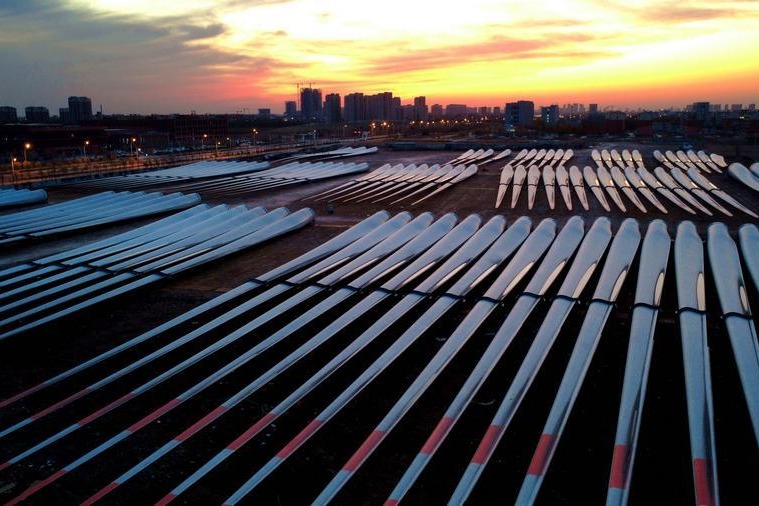TALES OF SILENT SUFFERING THROUGH MONOLOGUES
Women, who have close experiences of depression, pour their hearts out in stage production 'What happened to You?', reports Cheng Yuezhu.

On the stage of Beijing's Drum Tower West Theatre, the narrators, all women, ascended one by one. Against a pure black backdrop, supported only by simple art installations, they shared their own feelings or stories, some through poetic and abstract lines, others via lucid accounts of their own life episodes.
As the last performer, in a gentle yet firm tone, shared her poignant childhood experiences growing up with an abusive father, the other performers joined her on stage and sat in a circle, quietly listening to her.
Each performer had close experiences with depression, most having been diagnosed themselves, while others have friends grappling with the condition. These monologues were their responses to a question they've been too often asked, also the production's title, "What Happened to You?"
Directed by contemporary art critic and curator Liao Wen, the production was staged at the theater between Aug 30 and Sept 1, as a part of this year's sixth Luminous Festival, an annual event highlighting inclusive arts with stage performances, seminars and workshops.
The project was initiated by young artist Li Ruqi, better known as Kouzi. With herself and a few friends having gone through depression, she observed that when encountering individuals with depression, people often ask them what happened, in an attempt to find a logical answer so they'd understand.
However, for those with depression, this question can be overwhelming and nearly impossible to explain, since the personal, intricate and painful sentiments are difficult to convey. So, most of the time, they'd simply respond, "Nothing. I'm fine."
"Depression isn't something that can be generalized. Each person's causes and experiences are unique. So, rather than highlighting the concept of depression with a fixed narrative, I'd rather give everyone a chance to express themselves," she says.
Along with Liao, the director, she reached out to her close friends to find those who are willing to participate in the production and share their experiences onstage.
These performers vary in age and occupation, and most of them are performing onstage for the first time, but all of them have close experiences of depression.
The women tell in total seven stories. Their age groups vary between 20 and 50 years.
"We hoped that the actors can use the straightforward method of monologue to express their feelings, so really there is no strict standards of identity, age or stage experience. Our most important standard is that they are able to very genuinely and honestly say what they'd like to say," she says.
The production is created and performed adopting Liao's concept of "life performance", setting itself apart from traditional theater productions by allowing the performers a high degree of freedom to create and express themselves.
Liao started experimenting with this concept around 10 years ago, as an exploration of navigating between performance art and the performing arts.
"The similarity we share with performance art is self-expression rooted in the contemporary art field. As for theater, the performance adopts theatrical structure and certain acting techniques, but the actors are not performing characters. They're portraying themselves," Liao says.
In these performances, it doesn't matter whether the performers are professionals, or whether they're adopting artistic expressions. What truly matters is they are in any way of their choice — lines, movements or gestures — narrating their life situations and deepest emotions.
For this production, since the creative crew intended to emphasize its social significance and ensure the messages are lucidly conveyed to the audiences, they decided to adopt a monologue format.
"All the monologues were written by each of them personally. When I saw the lines they wrote, I was deeply surprised. Everyone expressed their raw feelings in a genuine and unique way, without any deliberate embellishment," she says.
While the production features very few stage props, the vast majority of them are installation artworks by contemporary artists, including Heart by Xu Jingyu and Dog by Wu Gaozhong.
"This has always been Liao's approach to life performance. In the eyes of the public, artworks often seem a little lofty. They are to be framed, appreciated and not to be touched. But art itself should be closely connected to life. We've been thinking about how to create more interaction and connection between art and real people," Li says.
These installations are matched with each performer after communicating with them. Some performers requested specific imagery, while others were paired with installations that fit naturally into the performers' narratives.
Liao says that before directing this production, she had limited knowledge about depression. However, upon learning about its increasing trend, especially among the younger generations, she hopes that this production can spark discussions, and enhance public awareness and understanding of depression.
The World Health Organization estimates that 54 million people in the country experience depression and about 41 million have anxiety disorders.
"The final result was truly astonishing. It was their first time on stage for most of the performers. When they performed, they weren't reciting memorized lines written by themselves, but were expressing their most genuine feelings. I think the performances are incredibly moving," Liao says.
"It takes immense courage and bravery to openly express one's weakest and most private moments, not just for them, but for everybody. So, I really feel for them to see them onstage, because they're revealing their most personal feelings rather than performing."
Although the creation and performance processes can be emotionally taxing, the performers believe that the production is a worthy cause to invest themselves in, and they are strong enough to readjust themselves.
"It is strenuous to perform three days in a row. But there's no need to worry about us. We'll carry on performing as long as we can, and we will recharge our batteries afterward," says Gu Feng, one of the performers.
"For me, I expressed my lines based on how I felt each day. For the first performance, I wasn't in a great state, so my delivery may have seemed a little cold or nonchalant. But over time, I started to feel changes in my own state. During the last performance, I felt that it is interesting to share my experiences with others."
According to Ge Huichao, founder of the Luminous Festival, the production is an effort to use art to reflect on social topics. While research and reports indicate a rising number of depression cases, stage productions or artworks addressing this topic are scarce in comparison.
"Presenting such a project in the theater is an opportunity for the performers, the audiences and the general public. It allows us to recognize the structural imbalance and creates a space for mutual understanding and connection," Ge says.

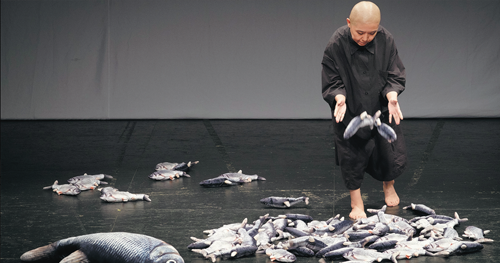
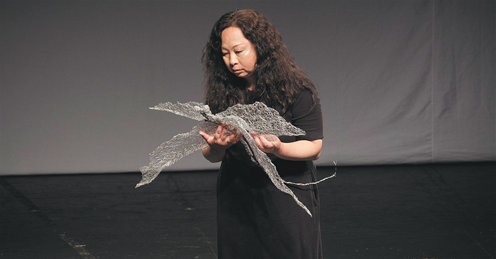
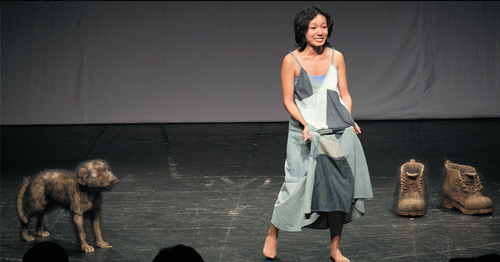
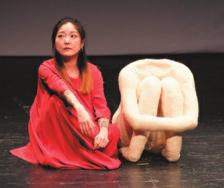
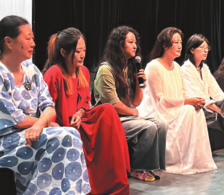
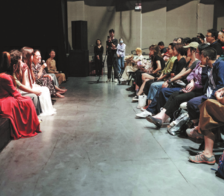
Creative members and performers join in a Q&A session.
Today's Top News
- Macao SAR holds flag-raising, reception to mark 26th anniversary of return to motherland
- China issues rules to regulate pricing practices of internet platforms
- US hits over 70 IS-linked targets in Syria in massive retaliatory strikes
- Technological innovation brings cultural heritage alive
- Consumption to play bigger part in growth
- Opposition moves to impeach Lai




















